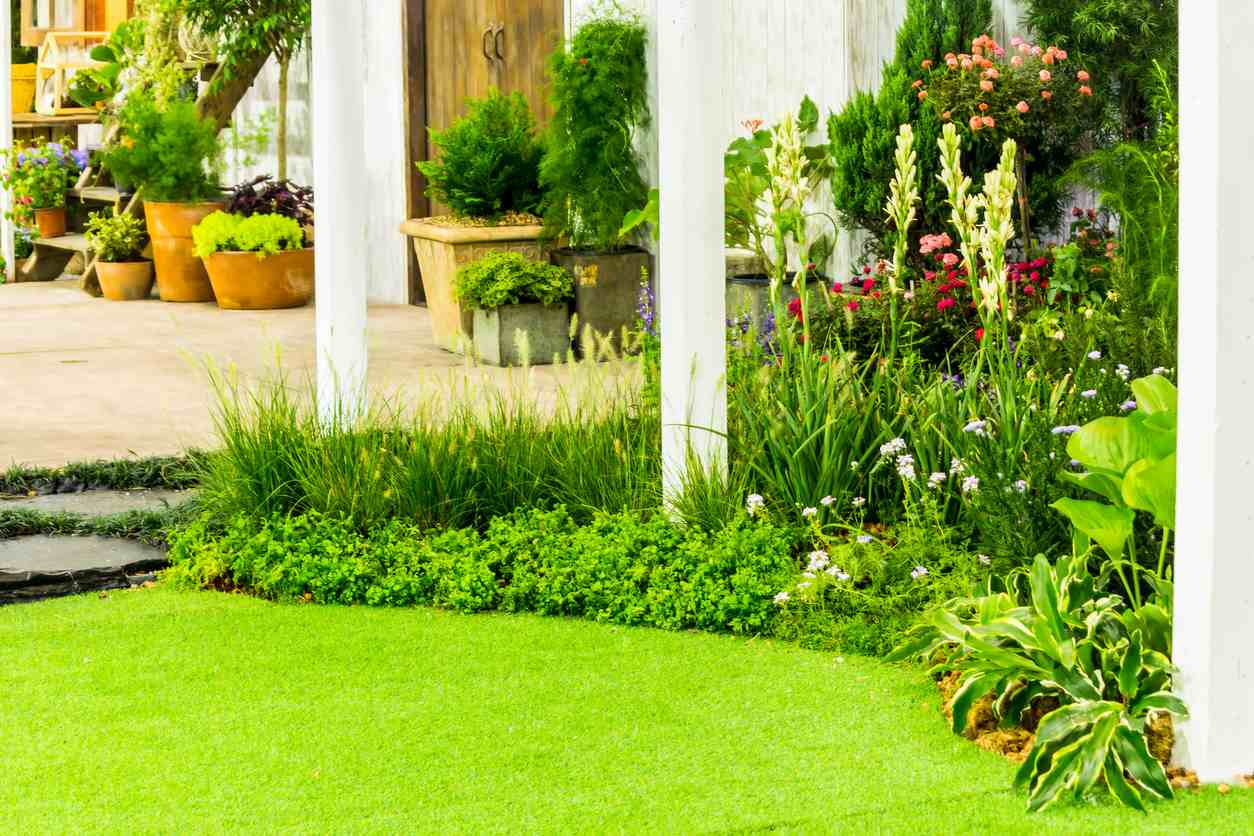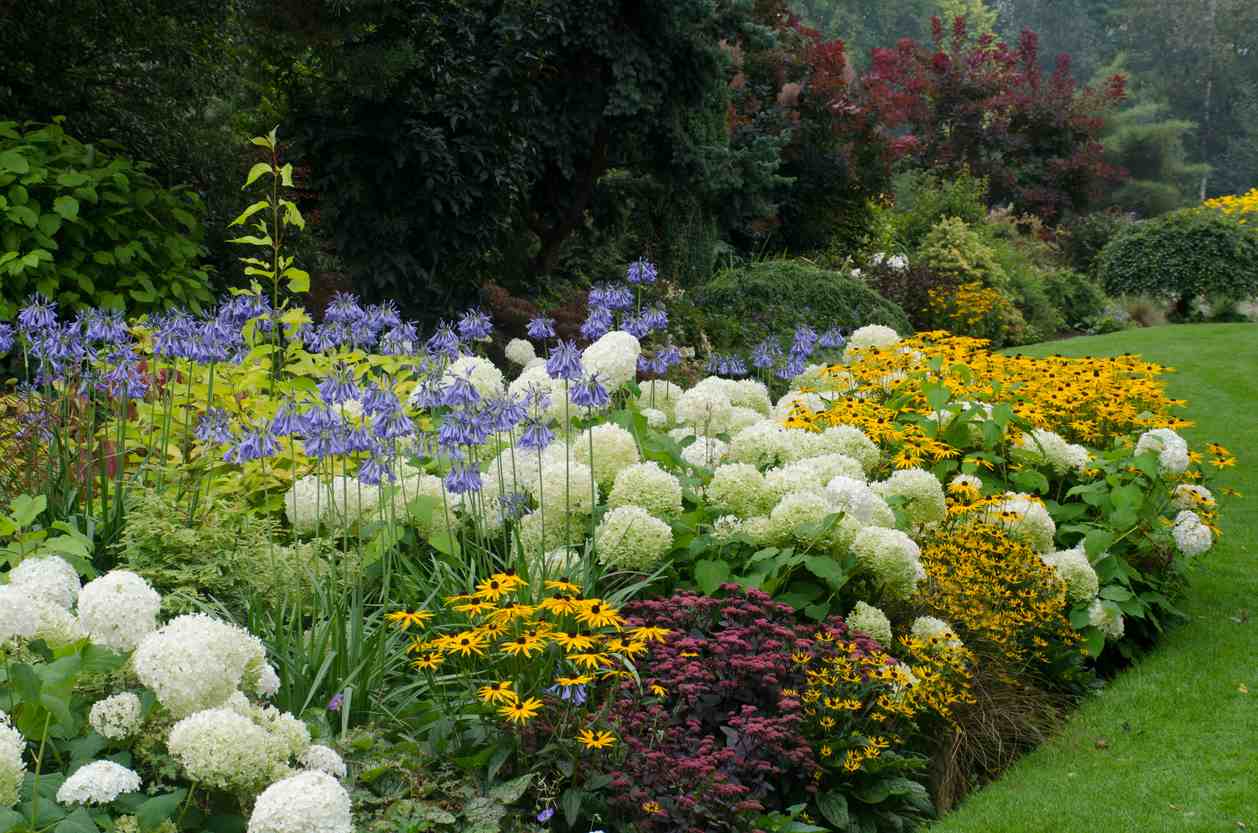
Caring for shrubs and trees
Some shrubs and trees need to be pruned, others to be planted:
- Shrubs that flower between late winter and early spring, such as spring spirea, forsythia, snowball viburnum, etc., see their flowers begin to fade to make way for foliage. So it isgood time to prune them.
- In the same way, take advantage of April to prune your boxwood.
- You can proceed to planting shrubs sold in potswhether in a clump to complement certain clumps or isolated to create an aesthetic effect.
- If you have a hedge to create, the timing is also right.
- As for conifers, such as cypresses, thujas, yews, etc., this is the last limit for planting those with bare roots or in plugs. Be careful, these trees need acidic soil and a northern exposure, sheltered from the sun.
Taking care of the flowers


As for flowers, depending on what you have in your ornamental garden, multiple tasks await you, whether planting, sowing, cuttings, staking, cleaning, etc.
Peonies
If your peonies form large clumps, it may be necessary to tutor them to prevent them from collapsing on your walkways or other areas. To do this, be careful not to overtighten the fasteners!
Spring bulbs
Spring bulbs such as daffodils, tulips, etc., are beginning to wilt. If you like to have a spotless garden, it may be tempting to pull them out, but it’s important to allow the foliage to turn yellow and wilt completely. This is how the plant regenerates itself for the following year. You can then leave the bulbs in place to enjoy them the following year.
Summer bulbs
Of the the second half of April, you can start planting summer bulbs, such as dahlias, gladioli, tuberous begonias, etc. Before planting them, it is advisable to enrich the soil with compost. You will also be able to plant lilies, whether in beds or in deep pots, making sure to provide them with rich, drained soil.
Dahlias and begonias
If you have some in your garden and would like to have more, you can divide or take cuttings from your dahlias and begonias. The advantage of cuttings is that it allows you to obtain more plants. In April, place the plants you intend for cuttings in a box filled with peat and sand. As soon as the first shoots appear, simply take stems to take cuttings.
Climbers
If you want jasmine, clematis or honeysuckle in your garden, it’s time to plant them, without forgetting to install a support to allow them to climb. On the other hand, if you already have some and want more, whether for yourself or as a gift, the month of April is conducive to their multiplication.
Seasonal flowers
To enjoy a garden that will be an explosion of flowers and colors within a few weeks, now is the time to sow directly in place the hardiest seasonal flowerssuch as marigolds, zinnias, cosmos, cornflowers, etc.
Rose bushes
It’s also the time to pamper your rose bushes, which will thank you by offering you abundant flowering with generous flowers. To do this :
- Hoe the soil around your rose bushes, then add compost.
- You can mulch the base with straw, but also flax straw, to keep the soil cool. Be careful not to use pine bark mulch!
- You can also start carrying out a preventive treatment against rose bush diseases, which you will then renew approximately every 3 weeks.
- If you wish, there is still time to plant rose bushes.
Perennials
Several tasks await you in April:
- If the weather is suitable, you can start planting perennials, such as lupins, columbines, Niger hellebores, euphorbias, etc. which, once well established, will offer you flowers year after year. They are ideal for creating a base of flowers in your garden to which annual plants will be added to create the flowery decor that you have imagined.
- From April 15, you can prune your heather. Divide the clumps of sufficiently developed perennials to multiply them. You can replant them immediately in another location.
- Also consider dividing your other summer perennials.
Taking care of the lawn
And there you have it, the mower is back in service and is not idle at the moment. Indeed, in April, the grass tends to grow quickly between the mild weather which begins to set in and the rains which are still frequent. Your lawn therefore needs you resume a regular mowing rhythm. If areas are bare and you haven’t done so in March, there is still time to sow grass. Likewise, it can be useful to use the scarifier to aerate grassy areas.
In the vegetable patch of your garden
If, to benefit from fresh vegetables at your fingertips, you have created a vegetable garden space in your ornamental garden, now is the time to sow. Some are done in the open ground, as for carrots, spinach, turnips, beets, radishes, etc., others in a sheltered pot, as for tomatoes, eggplants, peppers, etc..
You can also sow salads making sure to stagger the seedlings so as not to have them all at once. Don’t forget to reserve space for aromatic plants, such as parsley, coriander, etc. which will enhance all your recipes.
Other work to be done in the garden
Beyond all this, other tasks await you, which, on the whole, are more cleaning jobs:
- Gradually, remove the protection against the cold that you installed when the bad days arrive. This can be done sooner or later depending on the plants and the region in which you live.
- Just like grass, weeds grow quickly during this period, which means that you must resume weeding work on your flowerbeds, your rockery or your paths. To simplify this work, it is possible to use a hoe.
- If you have a pond or pond, it is time to rid it of anything that may have accumulated on the surface of the water over the winter. You can also empty your pond to clean it.

